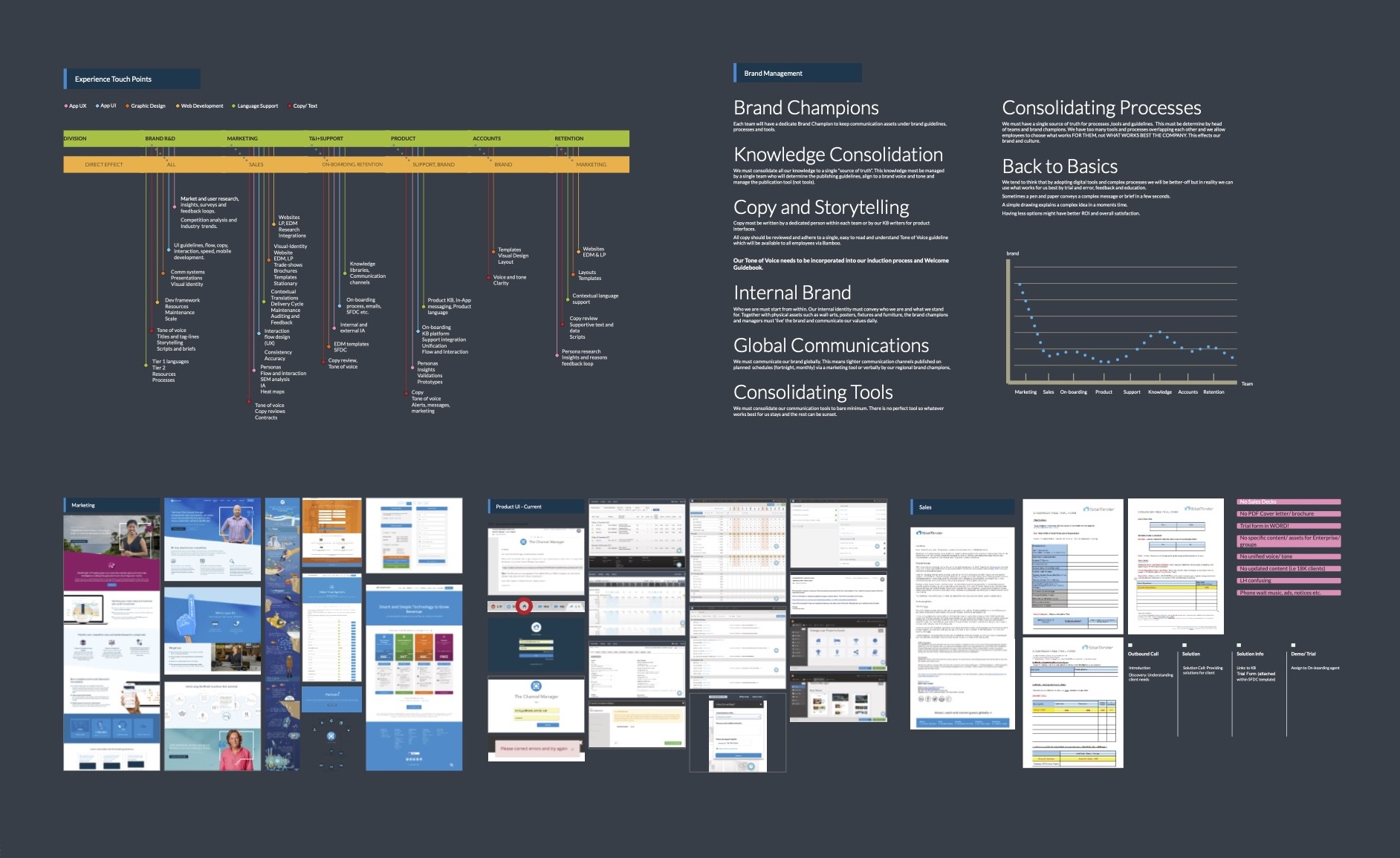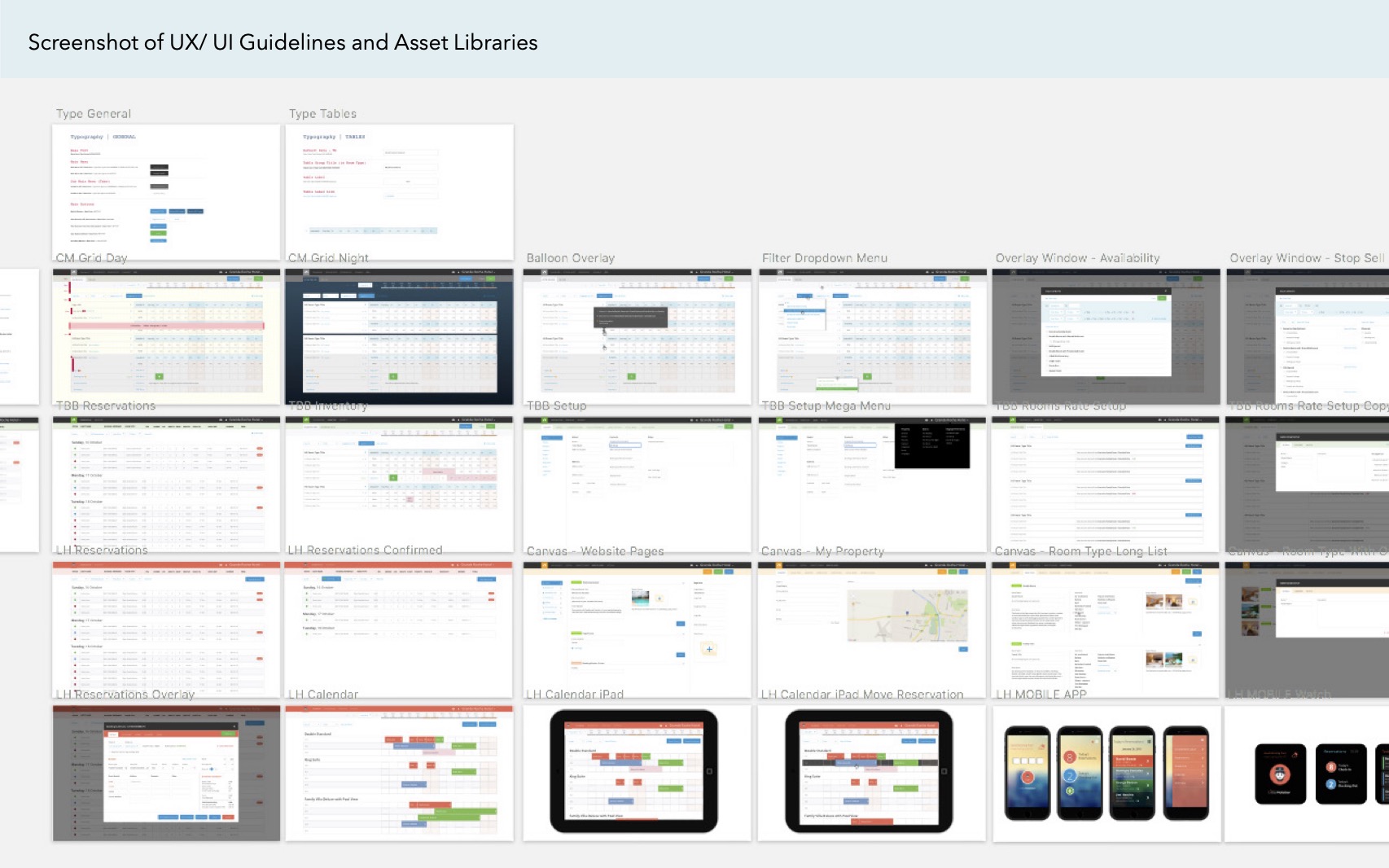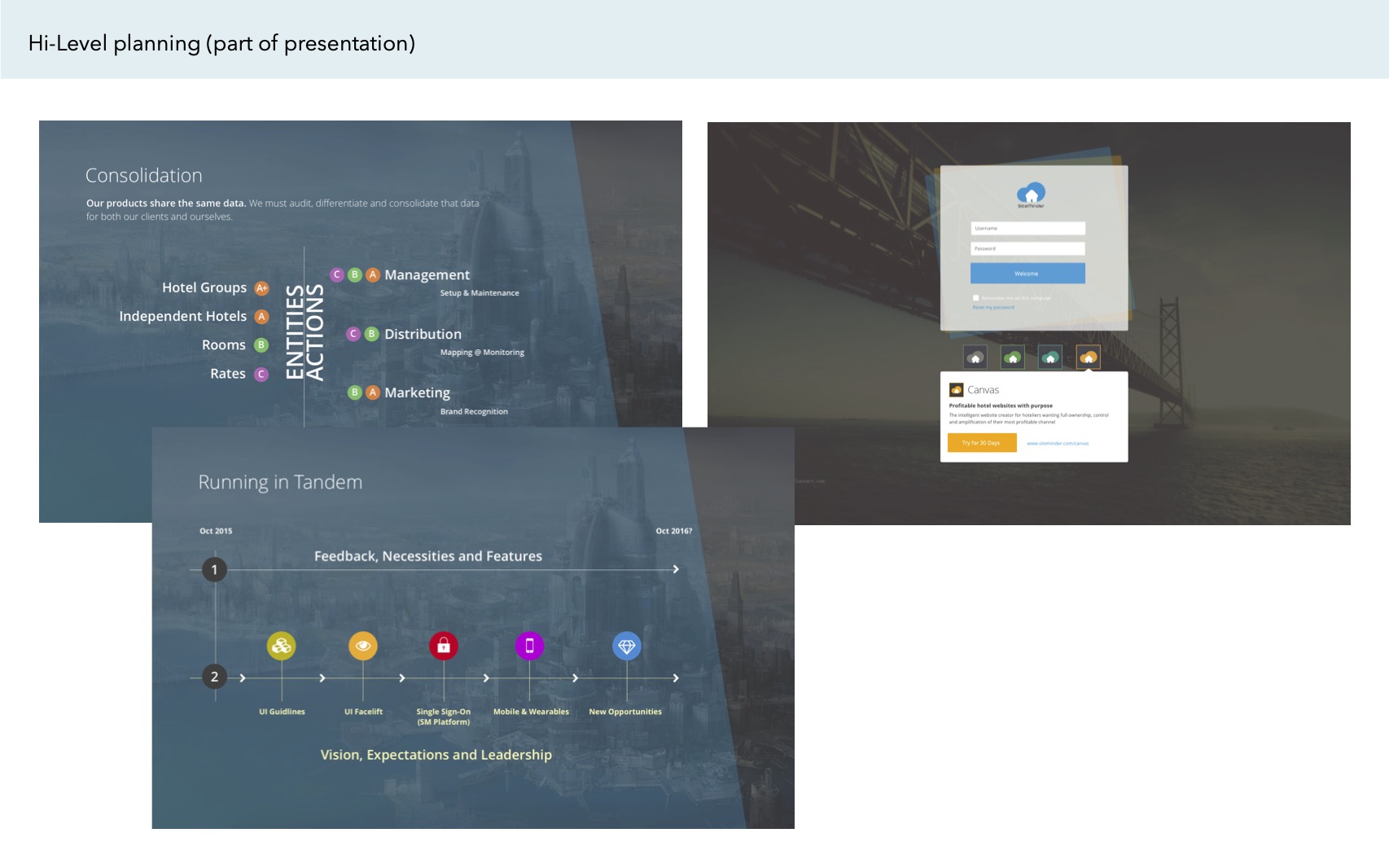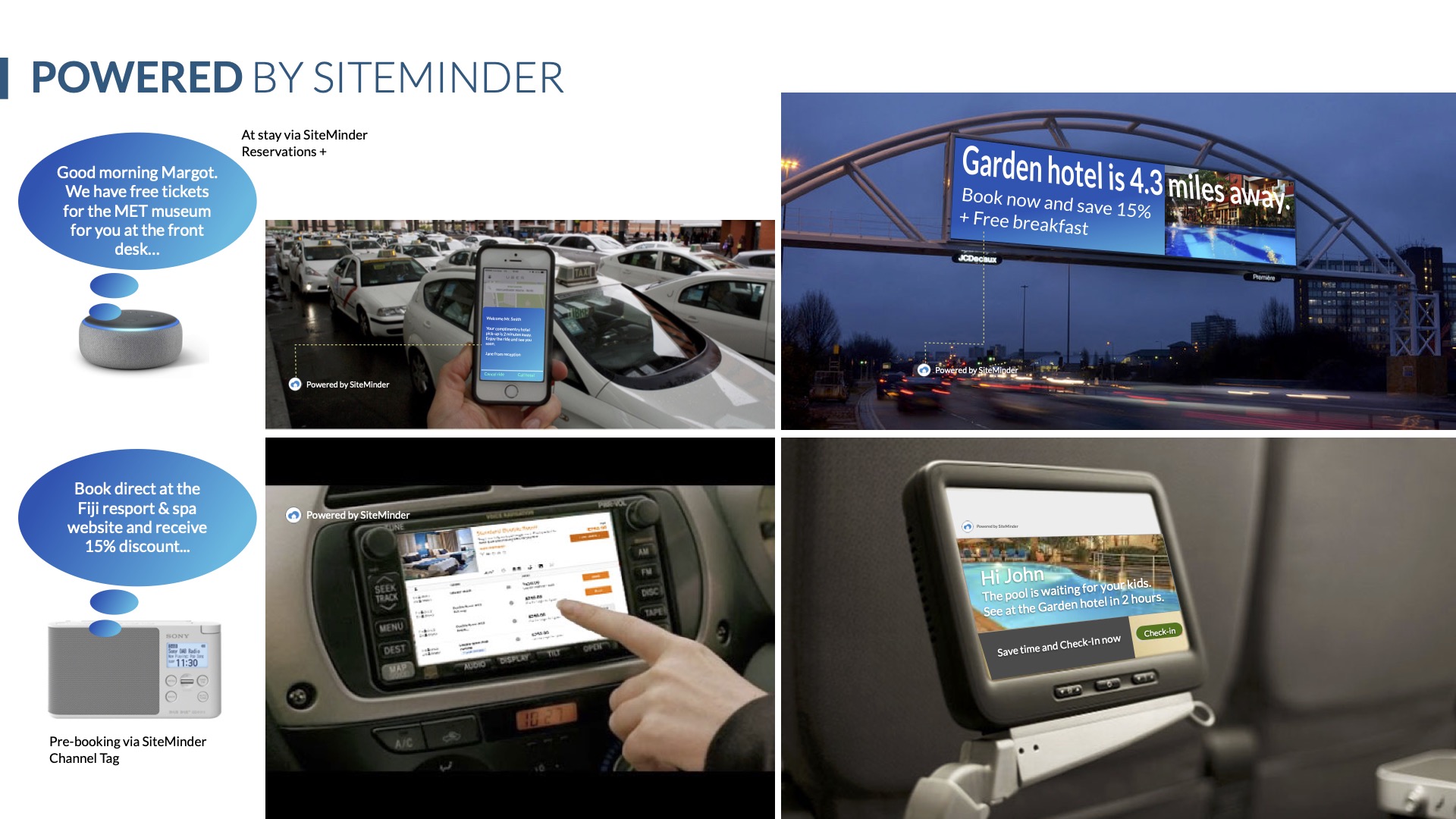Description
Growth is great, but user experiences often become inconsistent during the various interaction touchpoints. Consistency doesn’t have to be the same graphic and copy style over the entire interaction ecosystem, it does however mean putting attention and effort at each interaction point and delivery channel.
Typically, the marketing team will have the resources to set, design and publish well-crafted communication assets that use the brand guidelines (if the company has one). The problem often is what happens post-marketing. Sales emails, legal documents, forms, onboarding, support, product interface language etc. all start to be detached from one another or the brand entirely.
As head of design, responsible for the entire customer ecosystem, I had to keep my eye on the various interaction assets we created and used by multiple teams at various touchpoints with customers.
One of the methods to make sure we had some consistency was to assign brand champions within each major team. This position was like a spotter on a ship who could monitor and make sure assets were published to a certain design and brand standard.
Our product UX and UI designers kept our UI system constant including Tone of Voice. Things like numbers and currencies and how they appear in tables, long numbers and processes using foreign currencies such as Indian Rupees and other currencies that can break interfaces due to long numeric strings.
An end-to-end CX is not an easy task especially after years of rapid growth, However, putting some processes and simple guidelines in place reduces the possibility of bad or unpredictable experiences.
Audit Process
- Executive and leads interviews
- Customer journies and ecosystem mapping
- Self-drive; going through the process as a customer
- Screenshots and consolidation of assets
- Print and preset to all C-level stakeholders
- Recommendations and prioritisation workshops
- Project planning and audit review cycles
Outcome
Printing large examples of the entire user interaction points from marketing to customer retention and billing provided a real eye-opening for the entire organisation. Executives and team leaders can see how their interaction assets are seen and used by customers compared to other parts of the organisation. Simple things like email format, typeface and colours created a certain detached experience from a shiny marketing landing page.
We also looked at sounds and videos. For instance, how does the music of a waiting call sound to the user; is it the right music, how does it sound on the speaker while a user waits, does the selection menu make sense?
In the end, it is easy to choose and use certain technologies and tools to craft interaction assets, but designing those assets to fit within the entire ecosystem requires effort and awareness.



